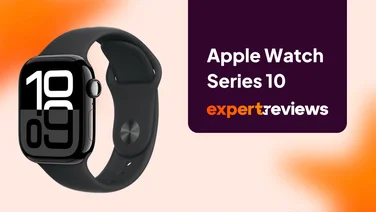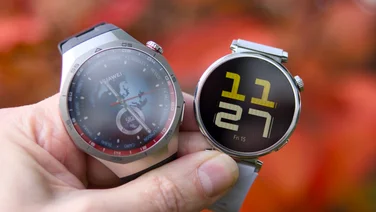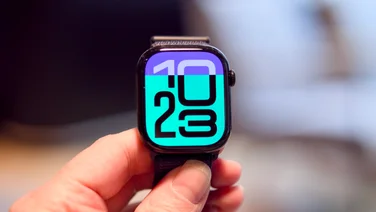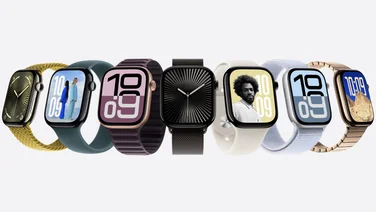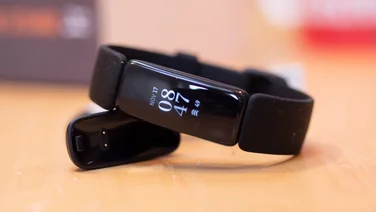To help us provide you with free impartial advice, we may earn a commission if you buy through links on our site. Learn more









- Slim, lightweight and comfortable
- Multi-day battery life
- Jam-packed with advanced features
- Not extensible via apps
- Messy, unintuitive mobile app
The Huawei Fit 4 Pro isn’t Huawei’s flagship smartwatch for 2025, but for me, it is the company’s best wearable. Not because it’s the best smartwatch around, with every feature under the sun, but because it gets 95% there without costing a huge amount of money.
While the Huawei Watch 5 wows with its fancy spherical sapphire crystal glass and its new-fangled X-Tap health sensor, the Watch Fit 4 Pro is what most prospective fitness focused smartwatch buyers should be looking for: it’s attractive, accurate, robust and a pleasure to wear.
What do you get for your money?
The Watch Fit 4 Pro isn’t quite as much of a bargain buy as the Watch Fit 3 last year at £249. But it does provide quite a bit more for your money.
First up, the design. Although it might look similar to the Watch Fit 3, the Watch Fit 4 Pro is actually built from more exotic materials and so it looks and feels more expensive – it’s likely to look smarter for longer, too. The aluminium body of the watch is also thinner than the Fit 3 at 9.3mm and its 1.82in OLED display is topped with sapphire crystal glass and a titanium bezel. It remains very light at 32g, and in all it’s a super comfortable watch to wear all day. That’s helped by the nylon hook and loop wristband supplied with the watch, which makes it very easy to get a snug, comfortable fit. It’s also available with a rubbery fluoroelastomer strap but that’s not as comfortable.
But it’s not all about the design. The Watch Fit 4 Pro also gains a number of features over the Watch Fit 3 that turn it into much more of a high-end health and fitness monitoring device. For instance, it has an ECG sensor – something usually reserved for far more expensive flagship watches.









The watch also now has a barometer for accurate altitude measurements and weather info. There’s a depth sensor for freediving, combined with EN13319 diving certification, and it’s water resistant right down to 5ATM (50M). The Fit 4 Pro is also dust resistant to IP6X and the display peaks at 3,000 nits so it’s ultra readable, even in very bright ambient light.
In addition to all of that, the Watch Fit 4 Pro gains full-colour offline maps and trail-running route guidance; a golf tracking mode with UK course maps built in; plus water sports route tracking. It has Huawei’s new Sunflower positioning system, which uses dual-band GPS for more accurate pace and distance tracking in built-up areas. There’s a new skin temperature sensor and arterial stiffness detection like Huawei’s more expensive watches have, and it can now be charged wirelessly via its own magnetic pad or any Qi charging pad.
Of course, the Watch Fit 4 Pro adds these features to all the core stuff its predecessor did so well last year. It tracks the sorts of metrics you’d want it to – steps, calories, sleep, pace, distance, blood oxygen levels – and for £240 all this combined makes it a rather special little smartwatch.
What did we like?
My favourite thing about the Huawei Watch Fit 4 Pro is its compact design. With so many wearables companies focusing on the high-end these days, it seems smartwatches like the Fit 4 Pro are becoming increasingly rare. But that’s not a good thing, especially when it comes to heart-rate tracking on the wrist.
Heavy watches have a tendency to move about more on the wrist and more movement makes it harder for the optical sensors the watch relies on to take heart rate measurements to pick out your pulse. Indeed, in these circumstances, you often experience something called “cadence lock”, a phenomenon whereby the watch is confused by the regular movement associated with exercise – particularly running – and reports an inaccurate number.
That’s something the Huawei Watch Fit 4 Pro sidesteps neatly. It’s so light and sleek design, and its nylon wristband so comfortably snug that, once you’re wearing it, it simply doesn’t move around very much – and that means locke- in, accurate heart rate readings as good as any dedicated fitness watch.









I tested it in my usual manner, comparing average and maximum heart rate readings across a number of workouts with readings from a Polar H10 heart rate chest belt, and while the results I saw weren’t quite up there with the Watch Fit 3 for accuracy, cadence lock was never an issue.
Positioning accuracy was pretty good, too. Again, in my testing, it lagged a touch behind the Watch Fit 3, but an average difference of 1.48% of distance recorded compared with my third-generation Stryd footpod is right up there with the best I’ve seen from any wearable and that difference is well within the margin for error.
But aside from the key accuracy components, which you’d hope any decent wearable could deliver, there are plenty of other things I like about the Fit 4 Pro. Battery life, for instance, continues to be a huge positive for Huawei’s wearables, and it’s particularly impressive here, in a watch so thin.









Huawei rates the Watch Fit 4 Pro at up to seven days for typical use, four days with the always-on display enabled and ten days maximum. I have no reason to doubt those figures. In my testing, while tracking three to four outdoor workouts a week, I found myself needing to charge the watch roughly once a week.
That’s superior to the bigger, more expensive Huawei Watch 5 (4.5 days typical) and a huge amount better than the Apple Watch Series 10 (a laughable 18 hours), the Samsung Galaxy Watch 7 (a woeful 22-24 hours) and the Google Pixel Watch 3 (24 hours).
It’s also worth noting in this “things that are good about the Fit 4 Pro” section, that the Huawei app is available on both Android and iOS platforms, meaning the watch remains fully functional whichever smartphone you own. That’s another area where Huawei wearables beat the mainstream competition, although you do get this type of support from more fitness-focused watches from the likes of Garmin, Coros and Polar.
What could be improved?
I’ve long complained about the mess that is the Huawei mobile app, and very little has changed here. It still puts things in weird places and settings are all over the place. It needs a revamp, and soon. And while I’m on the theme of the mobile app, it would be nice (although I appreciate not everyone needs this) if the GPX file export function included heart rate and other metrics, alongside just position and elevation.
Yes, you can extract the data by synchronising your workouts to Strava and exporting from there instead, but for keen athletes and data nerds alike, it would be nice to have the feature available natively.









Another area where the Fit 4 Pro falls behind the competition is that you can’t extend its features through the installation of third-party apps – at least not on an iPhone or Android handset. Notification handling is also limited. While you do get an alert when an email, whatsapp or text message arrives on your phone, the text is often truncated and can’t be read in full on the watch itself, and you can’t reply using your voice or an onscreen keyboard.
Also, although offline routing and mapping is included, this only functions via the workout app; there is no turn-by-turn mapping for walking, public transport or driving. You can get directions via notifications from Google Maps or Apple Maps on your phone, but there’s no native maps app on the Fit 4 Pro. That means if you want to see where you are on a map, you’ll have to dig your phone out of your pocket.
Finally, despite having the facility to make online payments, there isn’t any support for this function here in the UK. If that’s the feature you’re after, you need a “traditional” smartwatch like the Apple Watch Series 10, or a wearable that supports Google Pay like the Google Pixel Watch 3 or Samsung Galaxy Watch 7.
Huawei Watch Fit 4 Pro: Should you buy one?
The Huawei Watch Fit 4 Pro certainly has its limitations, much like any Huawei wearable. It can’t do a lot of the things the competition does. In fact, in some respects, it’s barely a smartwatch at all, at least not in the conventional sense.
However, if all you want is an attractive, comfortable watch that lasts longer than a day before needing a recharge, does a fine job of fitness and health tracking and sends notifications to your wrist, then the Huawei Fit 4 Pro fits the bill pretty much perfectly.
The main problem for the Fit 4 Pro is that the regular Huawei Watch Fit 4 is even better value at £149. It may lack the Fit 4 Pro’s sapphire crystal glass, its titanium bezel and some of its more advanced features, such as the dive mode depth sensor and EN13319 certification, its ECG monitoring and temperature sensing. But it has the same likeable, lightweight design and benefits from many of the same upgrades on the Watch Fit 3, including dual-band positioning.
That doesn’t mean the Huawei Fit 4 Pro isn’t brilliant, though, and as a mid-range wearable with high-end looks it pretty much stands alone.


